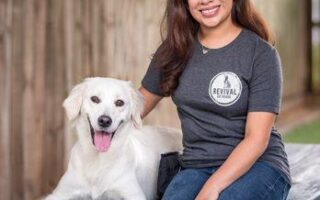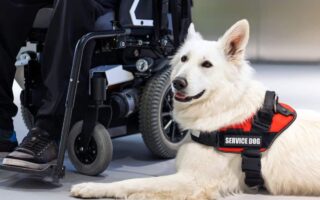Bringing a new puppy into your home is like welcoming a whirlwind of joy and energy, but along with those wiggly tails and puppy kisses comes the important task of potty training. This essential step not only helps keep your living space clean but also fosters a sense of security and routine for your furry friend. While the journey of potty training can sometimes be challenging, with patience, consistency, and a sprinkle of positive reinforcement, you can turn this adventure into a rewarding experience for both you and your pup. In this article, we will explore effective methods, common pitfalls to avoid, and tips to help you navigate the potty training process with ease and success. Grab your treats and let’s embark on this pawsome journey together!
Table of Contents
- Understanding Your Puppy’s Signals for Successful Potty Training
- Creating a Consistent Routine to Reinforce Good Habits
- Choosing the Right Tools and Techniques for Effective Training
- Troubleshooting Common Challenges During Potty Training
- Q&A
- In Retrospect
Understanding Your Puppy’s Signals for Successful Potty Training
As you embark on the journey of potty training your puppy, it’s crucial to recognize and respond to their unique signals. Understanding these cues will help you create a more effective and less stressful training environment. Puppies communicate their needs through various behaviors, and being attentive can make all the difference. Some common signals include:
- Sniffing the ground: This can indicate that your puppy is searching for a suitable spot to relieve themselves.
- Pacing or circling: If your puppy starts to move around restlessly, it may be a sign that they need to go out.
- Whining or barking: Vocalizations often indicate urgency; it’s their way of asking for immediate access to the outdoors.
- Sudden stillness: If your playful puppy suddenly stops and seems focused, they could be preparing to potty.
Equipping yourself with a quick-reference chart can enhance your understanding of these signals further. Here’s a simple guide to help you match behaviors with actions:
| Signal | Recommended Action |
|---|---|
| Sniffing | Take them outside immediately. |
| Pacing | Lead them to their designated potty area. |
| Whining | Open the door to allow them to go out. |
| Stillness | Observe closely and prepare for a potty break. |
Creating a Consistent Routine to Reinforce Good Habits
Establishing a daily routine for your puppy is essential for successful potty training. Consistency is key, as it helps your furry friend understand when and where they should relieve themselves. Start by setting specific times for feeding, playtime, and potty breaks. This allows your puppy to learn the cues and signals that indicate they need to go outside. Activities might include:
- Morning Routine: Take your puppy outside first thing after waking up.
- Post-Meal Breaks: Give your puppy a break outside shortly after each meal.
- Playtime Potty Check: After play sessions, lead your puppy to their designated potty spot.
- Evening Wind Down: Create a calming evening routine that ends with one last trip outside before bed.
To help track your puppy’s potty training progress, consider creating a simple chart that outlines their bathroom habits. This will not only keep you organized but will also enable you to identify patterns and adjust routines as needed. Below is a suggested table to record the frequency and times of potty breaks:
| Date | Potty Break Time | Notes |
|---|---|---|
| Day 1 | 8:00 AM | Success! |
| Day 1 | 12:00 PM | Accident inside. |
| Day 1 | 4:00 PM | Success! |
| Day 1 | 8:00 PM | Success! |
Choosing the Right Tools and Techniques for Effective Training
When embarking on the journey of training your puppy, selecting the right combination of tools and methods can significantly enhance the process. Here are some essential tools that can make the experience smoother and more enjoyable for both you and your furry friend:
- Quality Training Pads: These help create a designated area for your puppy to relieve themselves.
- Positive Reinforcement Treats: Small, tasty rewards motivate your puppy to learn and respond to commands.
- Clicker: A clicker can serve as an effective communication tool to signal good behavior immediately.
- Leash and Harness: Important for outings, leashes help control your puppy when they need to go outside.
- Written Schedule: Keeping a consistent routine fosters predictability, which can ease anxiety during training.
In addition to the right tools, employing effective techniques is crucial for successful potty training. Consider the following methods to create a positive learning environment:
| Technique | Description |
|---|---|
| Frequent Outdoor Breaks | Take your puppy outside regularly, especially after meals and naps. |
| Consistent Commands | Use specific phrases like “Go potty” to associate words with actions. |
| Supervised Playtime | Watch your puppy closely to catch signs that they need to go. |
| Accident Management | Stay calm and clean up messes quietly to avoid stressful associations. |
Troubleshooting Common Challenges During Potty Training
Potty training a puppy can come with its share of hurdles, but recognizing and addressing common issues can make the process smoother. One of the challenges many pet owners face is inconsistency in routine. Puppies thrive on a predictable schedule, so try to establish a regular potty routine that includes taking them out after meals, naps, and playtime. Positive reinforcement also plays a crucial role; rewarding your puppy with treats or praise immediately after they relieve themselves outdoors encourages them to repeat the behavior. If accidents happen indoors, avoid scolding them, as fear can create more confusion.
Another frequent challenge is figuring out the signs that your puppy needs to go outside. Watch for subtle cues such as sniffing, circling, or whining. Keeping a journal of your puppy’s potty habits can help you identify their patterns. It’s also important to ensure the environment is conducive to potty training; distractions like other pets or loud noises can interfere with their ability to focus. If your puppy continues to have accidents, consider consulting with a veterinarian to rule out any underlying medical issues that might be affecting their bladder control.
Q&A
Q&A: Potty Training Your Puppy
Q: When should I start potty training my puppy?
A: The best time to start potty training your puppy is as soon as you bring them home, typically around 8 weeks old. Puppies can start to control their bladders at around 12-16 weeks, but consistency and early training will set the foundation for good habits.
Q: What are the basic steps for potty training a puppy?
A: Potty training involves a few key steps:
- Establish a Routine: Take your puppy out at regular intervals—especially after meals, playtime, and naps.
- Designate a Potty Area: Choose a specific spot outside where you want your puppy to go. The scent will signal this area as their potty place.
- Use Positive Reinforcement: When your puppy goes in the right place, praise them enthusiastically and offer treats. This helps them associate going outside with positive outcomes.
- Supervise Indoors: Keep an eye on your puppy when they’re inside. If you catch them in the act of having an accident, gently interrupt them and take them outside.
- Be Patient and Consistent: Accidents will happen, and that’s totally normal. Stay calm and keep reinforcing the desired behavior.
Q: How can I tell if my puppy needs to go outside?
A: Puppies often show signs before they need to relieve themselves. Look for behaviors like:
- Sniffing and circling
- Whining, barking, or pacing
- Sudden stops during playtime
- Going to the door or scratching at it
Learning to recognize these cues is crucial and will improve with time and practice.
Q: What should I do if my puppy has an accident indoors?
A: First, stay calm. Yelling or punishing your puppy will only confuse them. Clean the area thoroughly with an enzymatic cleaner to eliminate any lingering odors that might encourage future accidents. Reflect on the situation—was your puppy left alone too long, or did you miss any signs? Use this as a learning opportunity for both of you.
Q: How long does potty training typically take?
A: The length of potty training can vary significantly depending on the puppy’s age, breed, and your consistency. Most puppies will begin to show improvement within a few weeks, but complete training can take several months. Some breeds may be easier to train than others, but patience will always yield results.
Q: Are there any tools that can help with potty training?
A: Absolutely! Here are a few helpful tools:
- Puppy Pads: These can be useful when you can’t take your puppy outside. Gradually introduce them to going outside to help with the transition.
- Leashes: Using a leash during potty breaks can help direct your puppy to the designated potty area.
- Crates: A crate can assist in training by leveraging your puppy’s instinct to avoid soiling their sleeping area, but remember to never use it as a form of punishment.
Q: What if my puppy continues to have accidents after several months of training?
A: If your puppy is still having accidents after several months, consider consulting your veterinarian. There might be a medical issue at play, or a behavioral concern that needs addressing. Sometimes, revisiting your training methods or routines can also illuminate new solutions.
By setting a consistent routine and using positive reinforcement, potty training can be a rewarding journey for both you and your puppy. Enjoy the process, and embrace the learning moments along the way!
In Retrospect
embarking on the journey of potty training your puppy is not just about teaching them where to go; it’s about building a foundation of trust and communication between you and your furry friend. With patience, consistency, and the right techniques, this essential phase can become a rewarding experience that strengthens your bond. Remember, every puppy learns at their own pace, and celebrating small victories along the way can make all the difference. So, embrace the challenges and joys of potty training, knowing that you’re shaping a well-mannered companion for years to come. it’s not just about a clean house, but about nurturing a happy, healthy relationship with your beloved pet. Happy training!



